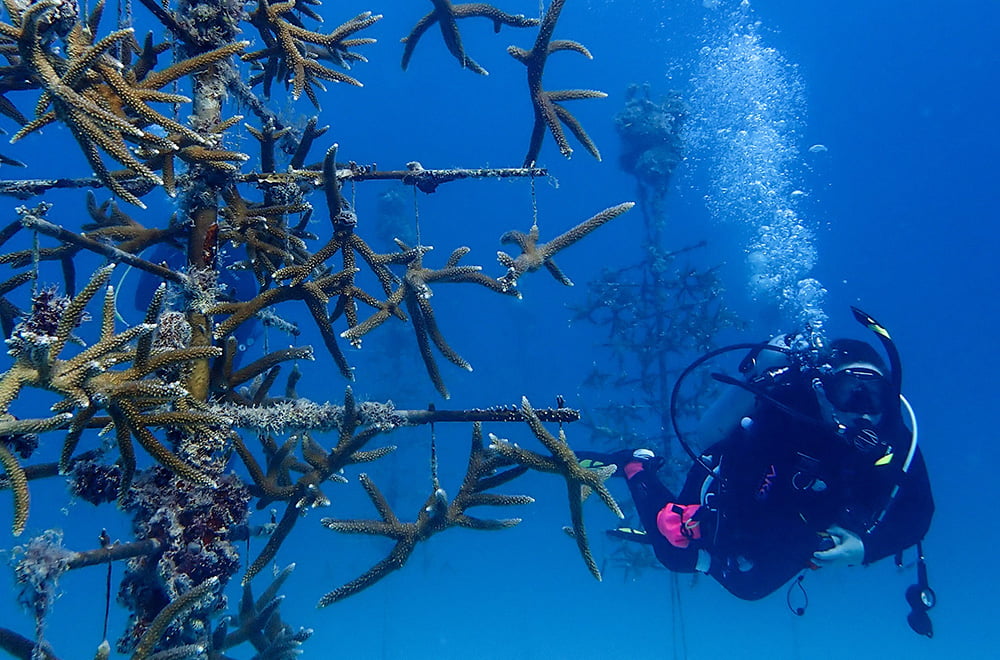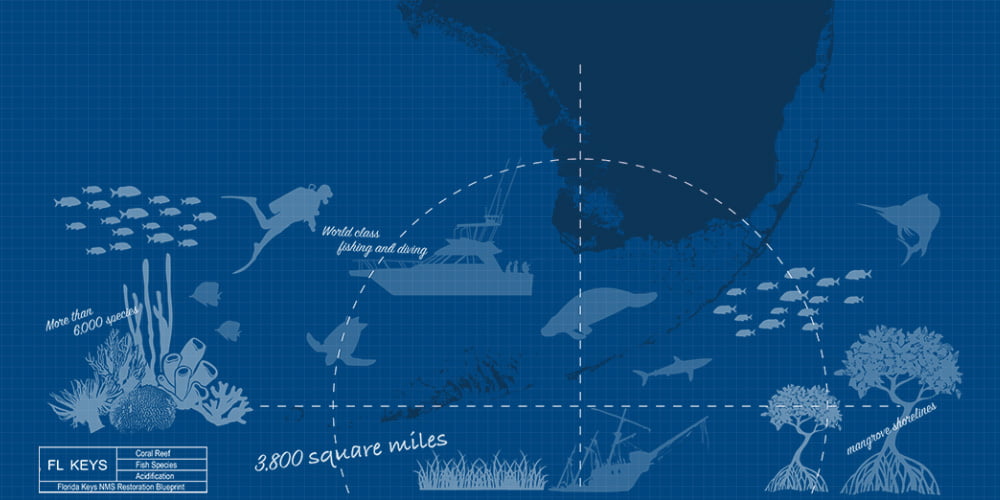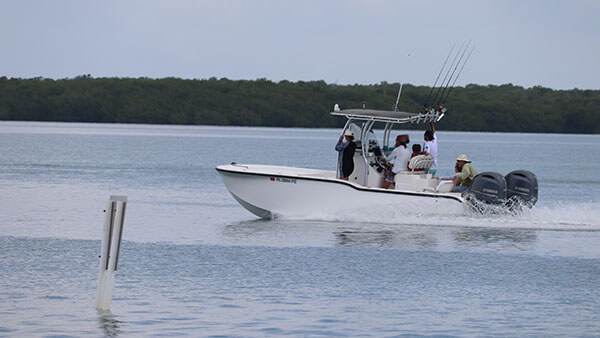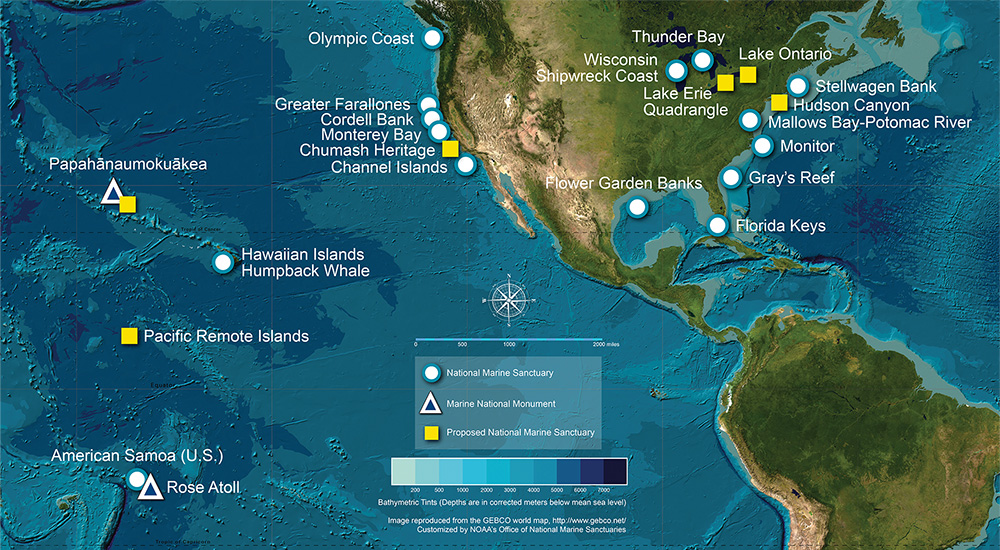Florida Keys National Marine Sanctuary is home to a diverse community of underwater habitats, ranging from the only coral barrier reef in the continental United States to the largest documented contiguous seagrass community in the Northern Hemisphere. More than 6,000 animal species are found here, along with an array of submerged historical and cultural resources, making this one of the world's most cherished locations for diving, fishing, boating, and wildlife viewing.
Sign up for our monthly newsletter for sanctuary news and upcoming events.

The Florida Keys region has become a world leader in coral reef restoration. Now, we are inviting the public to lend a hand through the Iconic Reef Guardians program.
All 3,800 square miles of the sanctuary fit in the palm of your hand with this GPS-enabled guide to Florida Keys waters.

In response to public concerns about threats to the marine environment, NOAA has completed the first major update of regulations in the Florida Keys since 1997.

NOAA-led project, unprecedented in scope and scale.

Take this free, online course to help You safely navigate the tricky waters of The Florida Keys.
The spirit of Florida Keys National Marine Sanctuary is captured in a mosaic image by artist Matt McIntosh for a poster that commemorates the 50th anniversary of the sanctuary system.

Safeguarding America's Premier Marine Places
From Washington state to the Gulf of America and from the Great Lakes to the Pacific Islands, the National Marine Sanctuary System protects 18 underwater parks spanning over 629,000 square miles of ocean and Great Lakes waters. By investing in innovative solutions, we strengthen these iconic places to address 21st-century challenges while supporting America's commerce and tourism. These unique locations inspire people to visit, value, and steward our nation’s iconic ocean and Great Lakes waters.